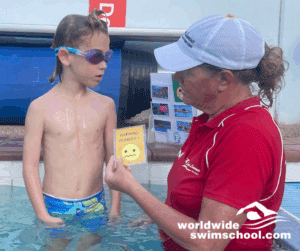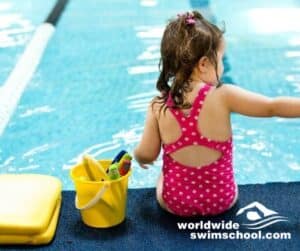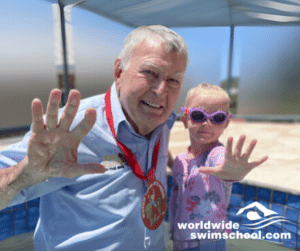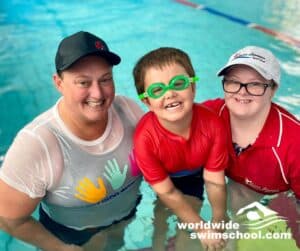Children who have reached the age of two should participate voluntarily in breath control activities. Breath control is a crucial first step to teaching your children how to swim. At this point, the child is able to follow instructions and therefore, encouraged to put their faces in the water.
The objective is to teach children to hold their breath. It’s a crucial part of being able to swim. Teaching them at a young age and helping them overcome certain fears early is a surefire way to bettering your child’s chances of being a natural at swimming.
Pouring Water over Faces
We have already learned how to build breath control in the water, and there are many demonstrations that can help your child learn how to swim. With that said, there are some things that you don’t want to do. For example, forcing the child to breathe underwater will scare them. The child may seize up in fear anytime you attempt to teach them breathe control.
Once a child sees that their parent is comfortable putting their heads underwater, they they are more likely to be happy with breath control exercise. One way of easing your way into this is by slowly pouring water over the child’s face. Read more here.
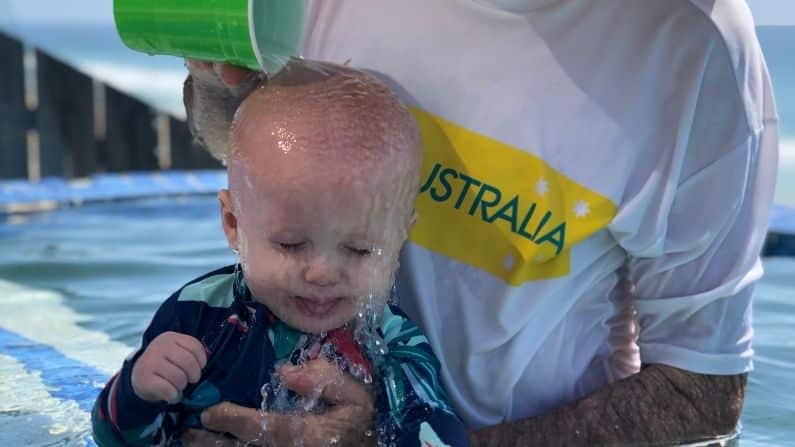
Fun Ways to Achieve your Goal of Breath Control
If your child is resisting the cup of water activity, don’t force it. Instead, look for creative and fun ways to achieve your goal. You can let your child pour the cup of water on your face first. This is a fun way to get the child comfortable with this activity and may eventually let you pour water on their face.
You can also distract the child during this activity with a toy. Once the child allows you to pour water on them, you can ask them to put their head underwater. It’s a crucial step to your child learning breath control.
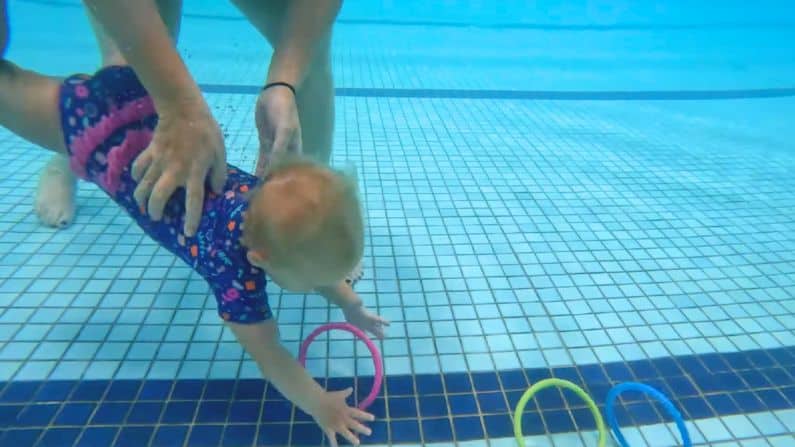
Look for Toys Underwater
A great way to get your child to submerge their face underwater unassisted is by having them look for toys. This way, the child can open their eyes underwater. When it comes to teaching your child how to swim, ensuring that they can do so without goggles is important.
There is a concern for safety if the child ends up depending on goggles too much. If the child falls in the pool without goggles they may begin to panic. Importantly, once you introduce goggles it is important to continually revise swimming without them.
To find out more about our Swim School Hub, click here.


